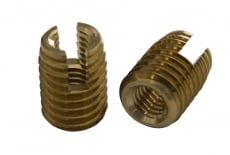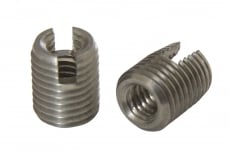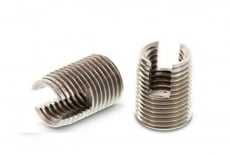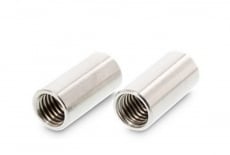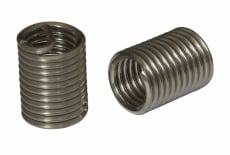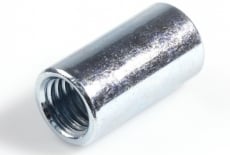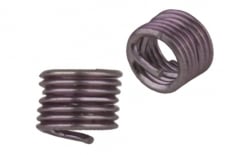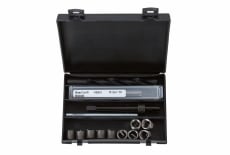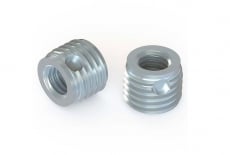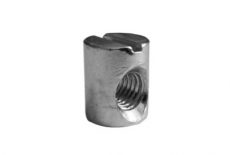Threads, being an important detail in structures, can lose their quality due to wear, damage or other factors. In such cases, it is important to be able to restore the thread to ensure reliable fixation. Below are effective ways to restore the thread.
Thread restoration methods
1. Use of Threaded Inserts
- Used to create a new thread in existing holes.
- Provide a strong and reliable connection.
Advantages of threaded inserts
| Threaded inserts allow threading to be restored in damaged holes, providing a strong and reliable connection. They also increase the strength and durability of joints, especially in metallic materials. Threaded inserts are ideal for joints in brittle and soft materials where threading can be problematic. They can be used in different production areas and for different types of connections. Threaded inserts can help reduce joint weight, which is important in manufacturing and engineering. | 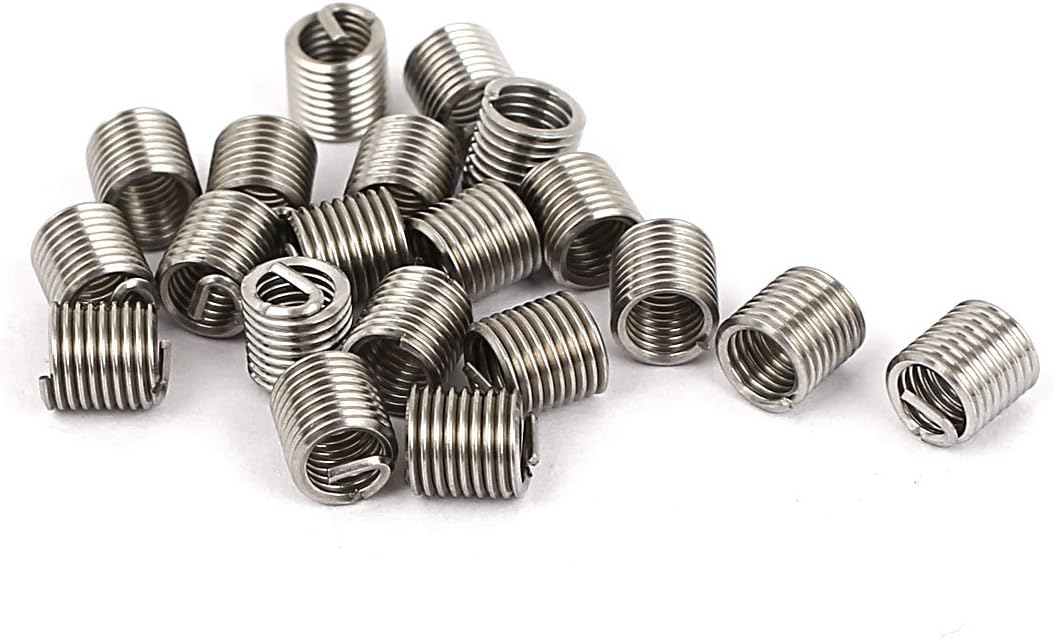 |
Disadvantages of threaded inserts
Installation of threaded inserts may require special tools and skills, which increases the complexity of the process. The cost of inserts and their installation can be higher compared to other thread restoration methods. In the case of use in aggressive environments, corrosion may occur, which may affect the quality of the connection. The size of the inserts can affect the volume and shape of the product, which should be taken into account when designing. During the installation of inserts, a part of the thread diameter may be lost, which must be taken into account when choosing a restoration method.
2. Mechanical Thread Restoration
- Using special tools to restore damaged parts of the thread.
- After repairing the damage, you can use a new bolt or nut with a larger diameter, or use a threaded insert to return the thread to the same size.
Advantages of tools for cutting a new thread
Threading tools allow you to quickly and efficiently create a new thread without much effort. Different types of threading tools are available, allowing them to be used for different sizes and types of threads. Threading tools can be used both manually and with the use of mechanized means, which increases their versatility. Usually, the tools have mechanisms to control the depth of the carving, which allows you to achieve precise results.
Disadvantages of tools for cutting a new thread
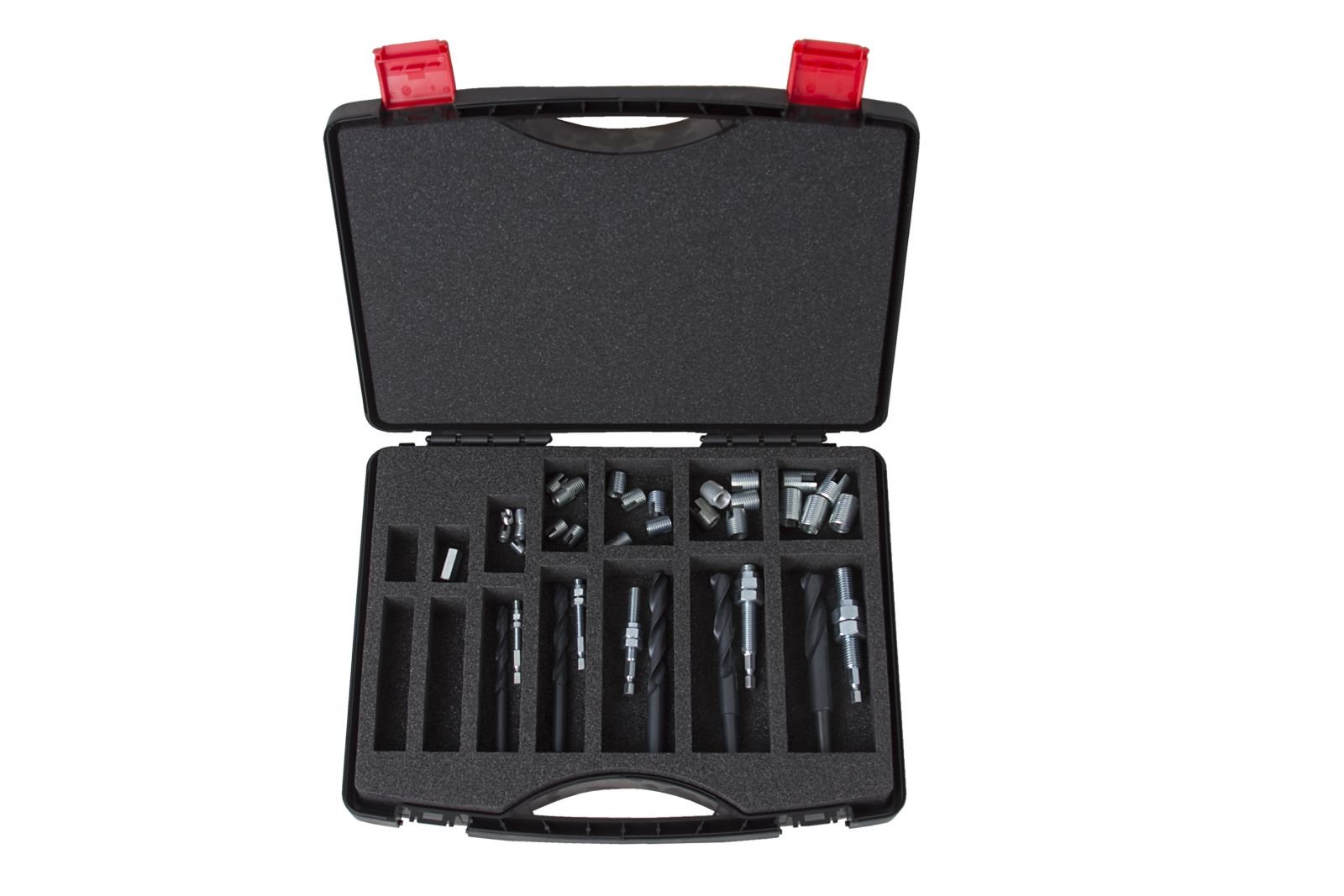 |
Requires skill and experience to achieve accurate and quality results. In some cases, it can be difficult to use threading tools in confined or hard-to-reach areas. The threading process can take time, especially when processing a large number of threads. If the thread is badly damaged, new threading tools may not be effective, other restoration methods may be more appropriate. |
3. Use of Specialized Chemicals (Cold Welding)
- Chemicals can be used to restore the thread.
- Provide high stability and efficiency.
Advantages of thread recovery using cold welding
Cold welding allows you to effectively restore a damaged thread, providing a strong and stable connection. This method does not require extensive processing or removal of material, which allows you to preserve the original dimensions of the part. The ability of cold welding to work with different materials makes it versatile for restoring threads on different surfaces. This method can be used on site, making it ideal for field repairs.
Disadvantages of thread recovery using cold welding
The attachment becomes inseparable. The use of cold welding requires a highly skilled operator, as precision and experience play an important role. Cold welding may be limited for large thread diameters or coarse materials. Cold welding requires special equipment, which may not always be available or expensive. The cold welding process can affect the properties of the material, in particular its strength and stiffness.
4. Tools for thread restoration
- There are many alternative methods of rethreading that work for different industries
- Specially created for specific types of threads
Advantages of rethreading with special rethreading tools
The use of special tools for restoration allows you to use existing parts and elements, saving money on replacement. Many tools allow you to restore the thread without removing the part from the assembly, which is convenient in cases where disassembly is limited. The process of rethreading can be done faster compared to replacing the part, which is important for efficient maintenance and repair. Some tools are designed to restore a damaged thread, making it functional.
Disadvantages of thread restoration using special tools for restoration
Tools may be less effective in hard-to-reach or confined spaces. Remanufactured threads may have less strength than the original, especially in cases of severe damage. In some cases, especially with a large thread depth, recovery can be caused more difficult. Users may need experience and skill to effectively use rethreading tools.
Key points of thread repair
Regardless of the method, it is important to consider the material and product dimensions and dimensional tolerances to select the most appropriate method of rethreading. Thread restoration is an effective way to extend the service life of structures and maintain their reliability.


 Nuts (15)
Nuts (15)